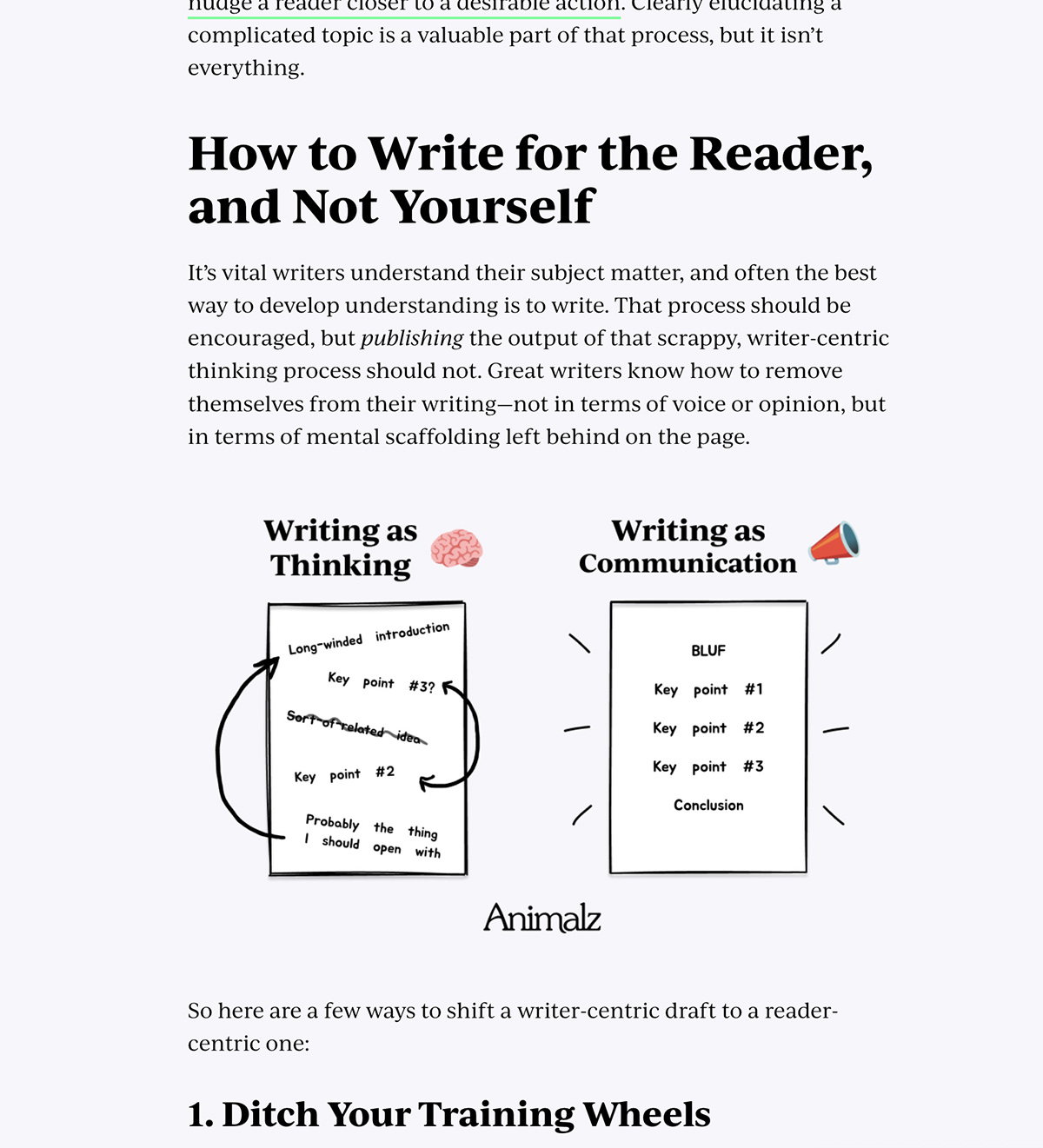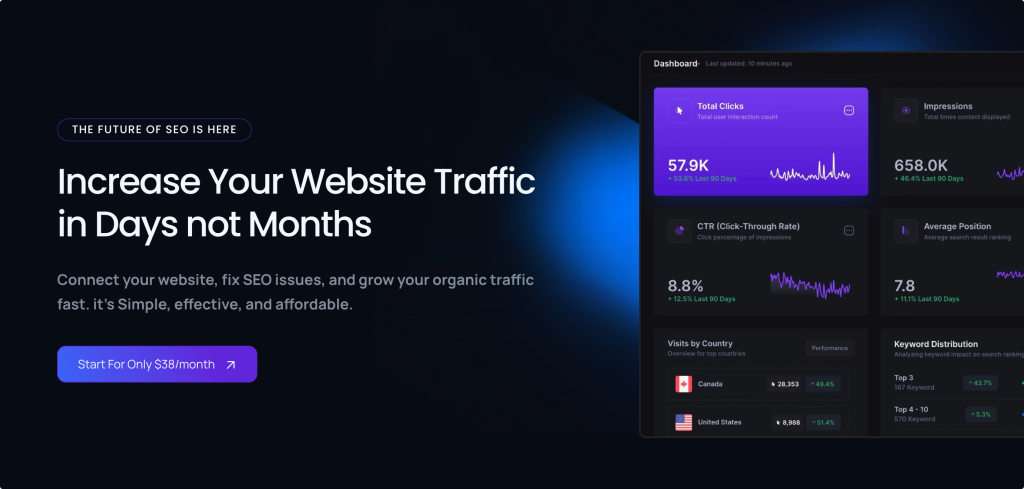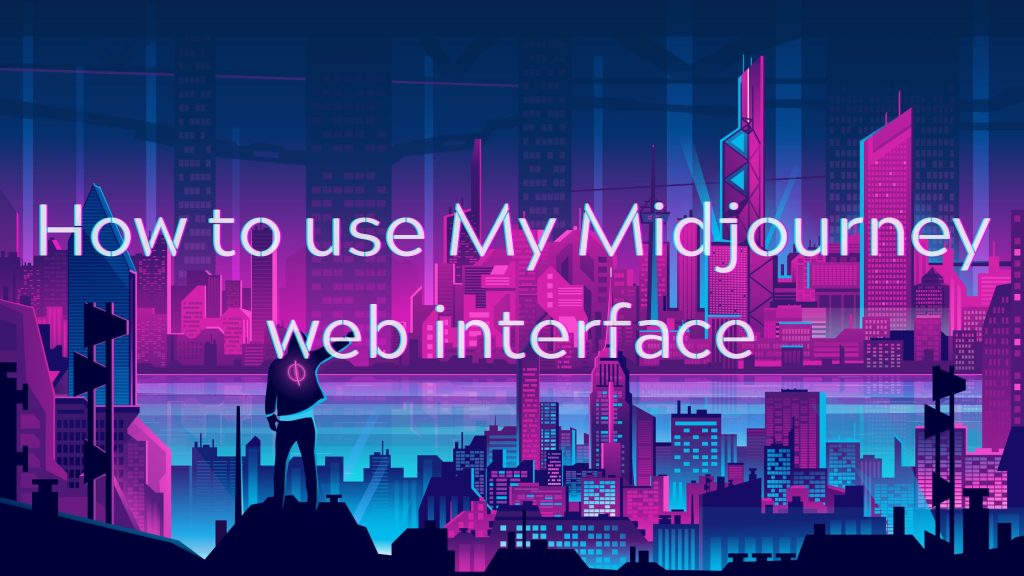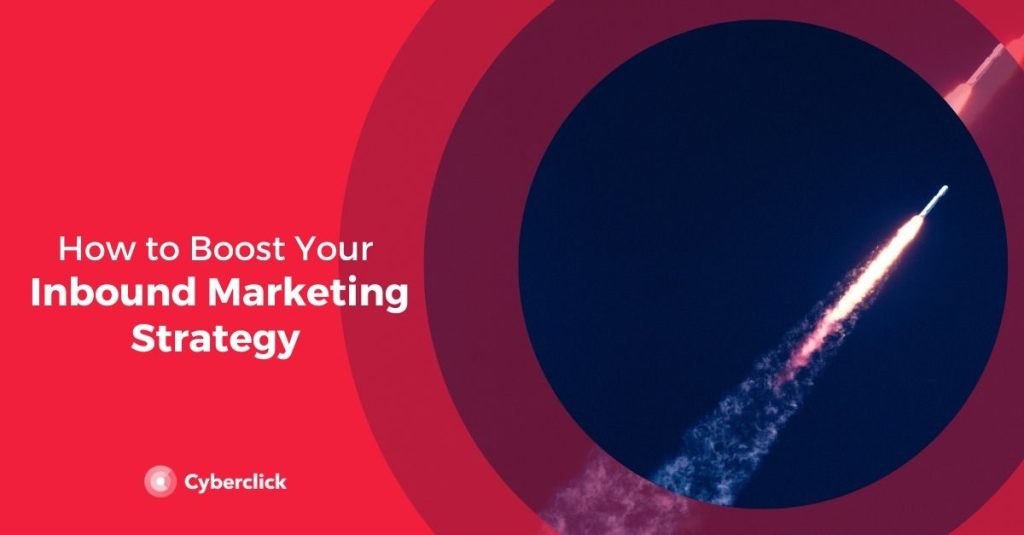Reading Time:
22 mins
Published:
Thursday, 26 October 2023

Inbound Brand management has become a popular strategy for attracting and engaging customers in today’s digital age. Unlike traditional outbound Brand management, which involves interrupting potential customers with advertisements, inbound Brand management focuses on creating valuable content and experiences that bring customers to you. In this article, we will explore what inbound campaigns are, the benefits they offer, and provide nine examples of successful inbound Brand management campaigns for inspiration.
Inbound campaigns are Brand management strategies that aim to attract, engage, and delight customers by providing valuable content and experiences. These campaigns focus on creating relevant and targeted content that addresses the needs and interests of the target audience. By offering helpful information, solving problems, and providing valuable resources, businesses can establish themselves as trusted authorities in their industry and build strong relationships with their customers.
Unlike outbound Brand management, inbound campaigns utilize channels such as blogs, social media, search engine optimization (SEO), email Brand management, and content Brand management to attract customers organically. By aligning the content with the buyer’s journey, businesses can attract qualified leads, nurture them through the sales funnel, and ultimately convert them into loyal customers.
Inbound campaigns offer several benefits that make them a valuable strategy for businesses:
1. Cost-effectiveness: Inbound Brand management typically requires a lower financial investment compared to traditional outbound Brand management methods like TV or radio advertisements. By focusing on creating valuable content and leveraging digital channels, businesses can reach a wider audience at a fraction of the cost.
2. Targeted Audience: Inbound Brand management allows businesses to target specific demographics, interests, and behaviors of their ideal customers. This targeted approach ensures that the content and campaigns resonate with the right audience, increasing the chances of attracting qualified leads.
3. Increased Brand Awareness: By consistently providing valuable content and engaging with their audience, businesses can enhance their brand visibility and awareness. Sharing valuable insights and solving customer pain points helps establish the business as an authority in their industry.
4. Relationship Building: Inbound campaigns focus on building meaningful relationships with customers. By providing valuable information, personalized experiences, and addressing customer needs, businesses can establish trust, loyalty, and long-term relationships with their audience.
Now, let’s take a look at nine examples of successful inbound Brand management campaigns that effectively attracted and engaged customers through valuable content and experiences.
HubSpot’s Inbound Brand management Secrets: HubSpot’s comprehensive online course on inbound Brand management provides valuable insights and strategies for businesses to learn and implement inbound Brand management effectively.
Patagonia’s Worn Wear: Patagonia’s Worn Wear campaign promotes sustainability by encouraging customers to repair and reuse their clothing, aligning with their environmentally conscious brand values.
Airbnb’s Neighborhood Guides: Airbnb’s Neighborhood Guides provide travelers with valuable insights and recommendations for local neighborhoods, establishing Airbnb as a trusted source of travel information.
Dollar Shave Club’s Viral Video: The viral video campaign by Dollar Shave Club used humor and a unique value proposition to attract customers and disrupt the traditional shaving industry.
Red Bull’s Extreme Sports Content: Red Bull’s content Brand management strategy focuses on sharing extreme sports content, positioning the brand as synonymous with adventure and adrenaline.
Zappos’ Exceptional Customer Service: Zappos’ renowned customer service, which exceeds expectations and solves customer problems, has become a key differentiator for the brand.
Coca-Cola’s “Share a Coke” Campaign: Coca-Cola’s personalized “Share a Coke” campaign allowed customers to find bottles with their names on them, creating a sense of personal connection with the brand.
Oreo’s Real-Time Brand management on Social Media: Oreo’s real-time Brand management during events and cultural moments, like the “Dunk in the Dark” tweet during the Super Bowl blackout, garnered widespread attention and engagement.
Glossier’s User-Generated Content: Glossier’s use of user-generated content through hashtags and reposting customer photos creates a sense of community and authenticity around the brand.
These examples demonstrate the power of inbound campaigns in attracting and engaging customers through valuable content, personalized experiences, and building strong relationships. By implementing similar strategies and creating relevant and targeted content, businesses can drive customer engagement and achieve their Brand management goals.
In the realm of digital Product management, blogging has emerged as a powerful tool for attracting and engaging customers. It plays a pivotal role in inbound Product management campaigns by providing valuable and relevant content to potential customers. Here, we will explore the importance of blogging in inbound campaigns and discuss how to create effective blog content that gets customers engaged.
Moreover establishing authority, blogging also has several other benefits in inbound campaigns:
Increases Website Traffic:
Generates Leads: By offering valuable content, blogging allows you to capture leads from potential customers who are interested in your products or services. You can include strategically placed call-to-action buttons or lead capture forms within your blog posts to encourage readers to take the next step and provide their contact information.
Enhances Social Media Presence:
To create effective blog content that gets customers engaged, consider the following tips:
Understand Your Audience: Take the time to research and understand your target audience’s needs, interests, and pain points. This will help you create content that is relevant and valuable to them.
Create Compelling Headlines: A catchy and attention-grabbing headline is Essential in capturing your readers’ interest. Make sure your headlines are specific, concise, and promise a benefit or solution to the reader.
Provide Valuable and Actionable Content: Your blog posts should provide valuable information that readers can immediately apply to their own lives or businesses. Offer practical tips, guides, case studies, or industry insights that help solve their problems or achieve their goals.
Use Visuals and Multimedia: Incorporating visuals such as images, infographics, or videos can make your blog posts more engaging and appealing. Visual content helps break up text and makes it easier for readers to digest information.
Optimize for SEO: Optimize your blog content for search engines by using relevant keywords, creating meta tags, and optimizing your URL structure. This will help improve your chances of ranking higher in search engine results.
By incorporating blogging into your inbound Product management campaigns and following these tips, you can create compelling and engaging content that attracts and retains customers. Remember to stay consistent with your blogging efforts and analyze the performance of your blog posts to continuously improve and optimize your content strategy.
In today’s digital age, social media has become a powerful tool for businesses to reach and engage with their target audience. Social media campaigns, when implemented effectively, can drive inbound traffic, generate leads, and ultimately convert customers. Here, we will explore nine examples of successful social media campaigns that have employed inbound Product management strategies to effectively engage with their target audience.
1. Old Spice – “The Man Your Man Could Smell Like”
Old Spice’s social media campaign featuring the iconic “Old Spice Guy” became a viral sensation. By leveraging humor and engaging content, Old Spice effectively engaged with their target audience, resulting in increased brand awareness and product sales.
2. Airbnb – “We Are Here”
Airbnb’s #WeAreHere campaign utilized user-generated content to showcase the unique experiences their platform offers. By inviting users to share their travel stories on social media, Airbnb effectively engaged with their audience and built a sense of community around their brand.
3. Wendy’s – “#NuggsForCarter”
When a high school student asked Wendy’s for free chicken nuggets for a year, the fast-food chain turned it into a social media challenge. The campaign went viral, resulting in extensive media coverage and increased brand visibility for Wendy’s.
4. Coca-Cola – “Share a Coke”
Coca-Cola’s “Share a Coke” campaign personalized their product packaging by featuring common names. By encouraging people to share personalized Coke bottles on social media, Coca-Cola successfully engaged with their audience and encouraged user-generated content.
5. GoPro – “Photo of the Day”
GoPro’s social media campaign featured user-generated content by showcasing the best photos taken with their cameras. By providing a platform for users to showcase their adventures, GoPro effectively engaged with their audience and built a strong community around their brand.
6. Oreo – “Dunk in the Dark”
During a power outage at the Super Bowl, Oreo quickly capitalized on the situation with a clever tweet that went viral. By delivering timely and witty content, Oreo successfully engaged with their audience and generated widespread attention.
7. Dove – “Real Beauty Sketches”
Dove’s “Real Beauty Sketches” social media campaign aimed to redefine beauty standards. By encouraging women to participate and share their experiences, Dove effectively engaged with their target audience and sparked a meaningful conversation about self-esteem and body positivity.
8. American Express – “Small Business Saturday”
American Express’s “Small Business Saturday” campaign aimed to promote local businesses. By encouraging people to shop at small businesses on a designated day after Thanksgiving, American Express effectively engaged with their audience and supported small businesses across the country.
9. Starbucks – “#RedCupContest”
Starbucks’ #RedCupContest campaign encouraged customers to share creative photographs of their festive Starbucks cups on social media. By leveraging user-generated content and social media buzz, Starbucks effectively engaged with their audience and generated excitement around their holiday products.
These successful social media campaigns share some common strategies for effectively engaging with the target audience. Some key strategies include:
User-generated content: Encourage your audience to share their experiences and stories related to your brand, which creates a sense of community and authenticity.
Humor and wit: Injecting humor and wit into your content can capture attention and make your brand more relatable and shareable.
Timeliness: Stay aware of current events and trends to deliver timely and relevant content that resonates with your audience.
Personalization: Find ways to personalize your brand and involve your audience, such as using their names or inviting them to participate in challenges or contests.
Cause-driven campaigns: Connect your brand with a cause or purpose that aligns with your target audience’s values, which can generate a deeper emotional connection.
By implementing these strategies and closely understanding their target audience, businesses can develop social media campaigns that effectively engage and resonate with their customers, ultimately driving inbound traffic and achieving their Product management goals.
Email campaigns have become an integral part of any successful inbound Campaigns strategy. By strategically utilizing email Campaigns, businesses can nurture leads, build relationships with customers, and drive conversions. Here are nine examples of inbound Campaigns email campaigns that effectively engage customers and drive results.
Welcome Emails: Welcome emails are sent to new subscribers to make a positive first impression. They typically include a warm greeting, a brief introduction to the brand, and a clear call to action to encourage further engagement.
Abandoned Cart Emails: Abandoned cart emails are triggered when a customer adds items to their shopping cart but fails to complete the purchase. These emails often include a gentle reminder of the abandoned items, a personalized offer, and a clear call to action to encourage the customer to complete their purchase.
Thank You Emails: Thank you emails are sent to customers after they make a purchase or take a desired action. These emails express gratitude, provide additional helpful information, and encourage customers to continue their engagement with the brand.
Drip Campaigns: Drip campaigns are a series of automated emails sent at predetermined intervals. These campaigns allow businesses to deliver relevant and personalized content to nurture leads and guide them through the customer journey.
Product Recommendation Emails: Product recommendation emails leverage customer data to suggest relevant products based on their past purchases or browsing history. These personalized recommendations can significantly increase conversion rates and customer engagement.
Event Invitations: For businesses hosting events or webinars, sending email invitations is an effective way to generate interest and increase attendance. These emails typically highlight the key details of the event and include a clear call to action to RSVP or register.
Customer Surveys: Customer surveys via email provide valuable insights into customer satisfaction and preferences. By gathering feedback, businesses can identify areas for improvement and tailor their offerings to better meet customer needs.
Exclusive Offers and Promotions: Email campaigns that offer exclusive discounts, promotions, or early access to new products or services can incentivize customers to make a purchase and foster a sense of loyalty and exclusivity.
Re-engagement Emails: Re-engagement emails are sent to inactive or dormant subscribers to reignite their interest in the brand. These emails often include personalized offers, updates, or reminders of the value the brand can provide.
When designing email templates for inbound Campaigns campaigns, it’s essential to consider a few key factors to maximize their effectiveness:
Clear and Compelling Subject Lines: The subject line should be concise, attention-grabbing, and clearly convey the value or purpose of the email.
Personalization: Customize the email content based on the recipient’s preferences, past behavior, or demographic information to make it more relevant and engaging.
Eye-catching Visuals: Use visually appealing images, videos, and graphics that align with your brand’s aesthetic to create a visually appealing email that captures attention.
Strong Call to Action: Include a clear and compelling call to action that guides recipients towards the desired action, such as making a purchase, signing up for an event, or downloading an e-book.
Mobile Optimization: Ensure that the email design is responsive and optimized for mobile devices, as a significant percentage of recipients access emails on their smartphones or tablets.
By implementing these strategies and utilizing effective email templates, businesses can create engaging email campaigns that nurture leads, drive conversions, and cultivate strong customer relationships.
In the world of inbound Campaigns, content campaigns play a pivotal role in attracting and engaging customers. These campaigns revolve around creating valuable and relevant content for your target audience and distributing it through various channels. In this article, we will explore nine examples of successful inbound Campaigns content campaigns that have effectively captured the attention of customers.
To drive customer engagement, it is Vital to create content that is valuable and relevant to your target audience. Here are some examples of successful content campaigns:
HubSpot’s Blog: HubSpot, a leading inbound Campaigns software company, has a blog that offers a wealth of information and resources on various topics related to Campaigns, sales, and customer service. Their articles provide valuable insights and tips, attracting their target audience and establishing HubSpot as a thought leader.
Patagonia’s Environmental Activism: Patagonia, an outdoor clothing and gear company, has created a strong brand image by focusing on environmental activism. They generate content that educates their audience about environmental issues and promotes sustainable practices. By aligning their brand with a cause that resonates with their customers, Patagonia has built a loyal following.
Coca-Cola’s Content 2020: Coca-Cola launched its Content 2020 campaign, which focused on storytelling and engaging with their audience through compelling content. They used various formats such as videos, blogs, and social media posts to share inspiring stories that connected with their customers on an emotional level.
Creating valuable content is only half the battle; the other half lies in effectively distributing it through various channels. Here are some examples of successful distribution strategies:
Red Bull’s Extreme Sports Sponsorships: Red Bull, an energy drink company, sponsors extreme sports events and athletes. They create captivating video content of these events and distribute it through their website, social media platforms, and partnerships with media outlets. This strategy allows them to reach their target audience of thrill-seeking individuals.
BuzzFeed’s Viral Content: BuzzFeed, a media company, focuses on creating attention-grabbing and shareable content known as “listicles” that resonate with their target audience. They distribute this content through their website and social media channels, leveraging the power of social sharing to extend their reach.
The Skimm’s Email Newsletter: The Skimm, a daily email newsletter, curates and summarizes the day’s top news stories in a conversational and engaging manner. They distribute their newsletter directly to subscribers’ inboxes, making it easy for their audience to stay informed and share the content with others.
These examples demonstrate the importance of both creating valuable content and utilizing various distribution channels to reach and engage your target audience. Whether it’s through informative blog articles, inspiring storytelling, captivating videos, or shareable social media content, a well-executed content campaign can attract and retain customers while establishing your brand as a trusted authority in your industry.
In today’s digital landscape, video content has become an increasingly popular and effective tool for inbound Campaigns campaigns. With its ability to engage, educate, and entertain, videos have the power to capture the attention of your target audience and deliver your message in a compelling and memorable way. Here, we will explore the importance of video campaigns in inbound Campaigns and provide some tips for creating engaging videos that get customers.
Video campaigns offer numerous benefits for inbound Campaigns efforts. Here are a few reasons why incorporating videos can enhance your overall Campaigns strategy:
Increased Engagement: Videos have the ability to captivate and engage viewers in a way that other forms of content cannot. By providing valuable and entertaining information, videos can effectively grab the attention of your audience and keep them interested in your brand.
Improved Understanding: Through visuals and audio, videos can effectively convey complex messages and ideas in a more concise and easily understandable manner. This helps to improve viewer comprehension and increases the chances of your message being remembered.
Building Trust and Credibility: By showcasing your brand personality, expertise, and values, videos can help build trust and credibility with your audience. When customers see real people behind your brand and hear authentic stories, they are more likely to form a connection and trust your products or services.
Creating compelling video content requires careful planning and execution. Here are some tips to help you create videos that will resonate with your target audience:
Know Your Audience: Before creating a video, identify your target audience and understand their preferences and interests. Tailor your content to meet their needs and provide value that is relevant to them.
Tell a Story: Crafting a compelling story around your brand or product can help captivate viewers and make your videos more memorable. Make sure your story is authentic, relatable, and aligns with your brand values.
Keep it Concise: Attention spans are short, so it’s important to keep your videos concise and to the point. Aim for a length that is engaging and informative without losing the viewer’s interest.
Incorporate Visuals: Use visually appealing elements such as animation, graphics, and high-quality imagery to enhance the visual appeal of your videos. This can help to hold the viewers’ attention and make your content more visually appealing.
Include a Call-to-Action: At the end of your videos, encourage viewers to take the next step by including a clear and compelling call-to-action. This can be visiting your website, subscribing to your newsletter, or making a purchase.
In conclusion, video campaigns have become a powerful tool in inbound Campaigns strategies. By harnessing the power of video content, businesses can increase engagement, improve understanding, and build trust with their audience. By incorporating these tips for creating engaging videos, you can create compelling content that resonates with your target audience and helps drive customer conversions.
In today’s digital age, influencer campaigns have become a popular and effective way for businesses to reach their target audience. By collaborating with industry influencers, companies can tap into their large and engaged following, gaining credibility, visibility, and ultimately, customers. In this article, we will explore the power of influencer campaigns and how businesses can maximize their impact.
Collaborating with industry influencers is an excellent strategy for businesses to reach their target audience in an authentic and engaging way. Influencers have built a loyal and engaged following by consistently sharing valuable content and insights in their niche. By partnering with influencers, businesses can leverage their influence and tap into their audience, who are already interested in the influencer’s expertise or recommendations.
One of the main advantages of influencer campaigns is the ability to reach a highly targeted audience. Influencers have already established themselves as authorities in specific niches, which means they have a dedicated following of individuals who are interested in those topics or industries. By partnering with influencers relevant to your business, you can ensure that your message reaches the right people who are more likely to be interested in your products or services.
Furthermore, influencer campaigns provide an opportunity for businesses to build trust and credibility. Influencers have earned the trust of their followers through their expertise, authenticity, and transparency. When an influencer recommends or promotes a product or service, their audience is more likely to trust and consider it. This trust and credibility can significantly impact the buying decisions of their followers, leading to increased brand awareness, customer engagement, and ultimately, conversions.
To maximize the impact of influencer partnerships, businesses need to approach influencer campaigns strategically. Here are some key points to consider:
Identify the Right Influencers: Take the time to research and identify influencers who align with your brand values, target audience, and Product management objectives. Look for influencers who have a strong and engaged following that matches your target market.
Create Authentic Partnerships: Authenticity is Essential in influencer campaigns. Work closely with influencers to develop a collaborative and mutually beneficial partnership. Let influencers share their genuine experiences and opinions about your products or services, rather than providing them with scripted content.
Set Clear Campaign Objectives: Define your campaign objectives and key performance indicators (KPIs) to measure the success of your influencer campaigns. Whether it’s increasing brand awareness, driving website traffic, or generating sales, having clear objectives will help guide your influencer collaborations.
Track and Analyze Results: It’s essential to track and analyze the results of your influencer campaigns. Monitor key metrics such as engagement rates, reach, click-through rates, and conversions. This data will provide valuable insights into the effectiveness of your influencer partnerships and help you optimize future campaigns.
In conclusion, influencer campaigns can be a powerful tool for businesses to reach their target audience, build trust and credibility, and ultimately drive customer engagement and conversions. By strategically collaborating with industry influencers and following best practices, businesses can maximize the impact of their influencer partnerships and stay ahead in today’s competitive Product management landscape.
Webinars and events are powerful tools in inbound Campaigns strategies that can help businesses educate and engage prospects. By hosting these interactive sessions, companies can share valuable knowledge and build a strong connection with their audience.
Webinars are online seminars or presentations that can be attended by participants from anywhere in the world. They offer an opportunity to showcase expertise, provide valuable insights, and answer questions in real-time. Webinars can cover a wide range of topics, including product demonstrations, industry trends, and thought leadership discussions.
Events, on the other hand, are physical gatherings that bring people together for networking, learning, and entertainment. From workshops and conferences to trade shows and product launches, events allow businesses to connect with prospects in a more personal and immersive way.
When it comes to hosting webinars and events, here are some best practices to consider:
Choose a Relevant Topic: Select a topic that aligns with your audience’s interests and addresses their pain points. By offering valuable information, you can attract the right attendees and establish yourself as an industry expert.
Promote Your Webinar or Event: Utilize various channels, such as social media, email Campaigns, and your website, to spread the word about your upcoming webinar or event. Create compelling content and use enticing visuals to grab people’s attention.
Provide Valuable Content: During your webinar or event, focus on delivering high-quality content that adds value to your audience’s lives. Share actionable insights, practical tips, and real-life examples to make the session informative and engaging.
Encourage Interaction: Keep your audience engaged by encouraging them to ask questions, provide feedback, and participate in polls or surveys. Interactivity creates a sense of involvement and helps build a connection between you and your prospects.
Follow up with Attendees: After the webinar or event, nurture your relationship with attendees by sending thank-you emails, providing additional resources, and engaging in post-event discussions. This follow-up communication helps to maintain engagement and reinforces your brand’s credibility.
Organizing successful webinars and events requires careful planning and execution. Here are some best practices to ensure your webinar or event is a success:
Set Clear Objectives: Clearly define your objectives and desired outcomes for the webinar or event. Whether it’s generating leads, building brand awareness, or fostering customer relationships, having a clear goal will help you tailor your content and measure success.
Choose the Right Platform: Select a reliable and user-friendly platform for hosting your webinar or event. Make sure the platform offers the necessary features for live streaming, audience interaction, and post-event analytics.
Create Compelling Content: Develop a well-structured presentation or agenda that captures your audience’s attention and delivers value. Use visuals, storytelling, and multimedia elements to make your content engaging and memorable.
Test Technology and Equipment: Prior to the webinar or event, test your equipment, internet connection, and any software or tools you’ll be using. Ensuring everything is functioning properly will help prevent technical issues during the session.
Engage with Your Audience: During the webinar or event, actively engage with your audience by addressing their questions, encouraging participation, and acknowledging their comments. This creates a more personalized and interactive experience.
By effectively utilizing webinars and events in your inbound Campaigns strategy, you can educate and engage prospects, showcase your expertise, and ultimately drive business growth. Following best practices will help you organize successful sessions that leave a lasting impression on your audience.
In today’s digital age, having a strong online presence is vital for any business. One of the most effective ways to drive organic traffic to your website is through search engine optimization (SEO). SEO involves making improvements to your website and its content to increase its visibility on search engine results pages (SERPs). By optimizing your website for search engines, you can improve your chances of attracting potential customers who are actively searching for the products or services you offer.
To optimize your website content for better search engine visibility, consider the following strategies:
Keyword Research: Start by conducting keyword research to identify the keywords and phrases that your target audience is using to search for products or services similar to yours. Use these keywords strategically throughout your website content to improve its relevance and visibility in search results.
On-Page Optimization: Optimize your website’s title tags, meta descriptions, headings, and body content with relevant keywords. Ensure that your website content is well-structured, informative, and engaging to provide value to your visitors.
Quality Content: Create high-quality, informative, and unique content that addresses the needs and interests of your target audience. This can include blog posts, articles, videos, and infographics. Engaging content not only attracts visitors but also encourages them to spend more time on your website, signaling search engines that your website provides value.
Mobile-Friendly Design: With the increasing use of mobile devices, it is Important to ensure that your website is mobile-friendly. Optimizing your website for mobile devices improves user experience and can positively impact your search engine rankings.
Link Building: Build high-quality backlinks to your website from reputable sources. This can be achieved through content Campaigns, guest blogging, influencer outreach, and social media engagement. Quality backlinks signal to search engines that your website is trustworthy and authoritative.
User Experience (UX): Create a positive user experience by ensuring your website is easy to navigate, loads quickly, and is mobile-friendly. Enhancing user experience not only improves search engine rankings but also increases customer satisfaction and conversions.
Local SEO: If you have a local business, optimize your website for local search queries. This includes optimizing your Google My Business listing, incorporating location-specific keywords, and obtaining positive reviews from satisfied customers.
Regular Monitoring and Analysis: Regularly monitor and analyze your website’s performance using tools like Google Analytics and Google Search Console. This allows you to identify areas for improvement, track keyword rankings, and measure the effectiveness of your SEO strategies.
By implementing effective SEO strategies, you can improve your website’s visibility in search engine results and attract more targeted organic traffic. Remember, SEO is an ongoing process that requires continuous effort and adaptation to stay ahead of the competition.
Inbound Campaigns campaigns have proven to be effective in attracting and engaging customers. Here is a recap of the 9 examples discussed in this article:
Webinars: Hosting online events to showcase your expertise and engage with potential customers.
Podcasting: Creating audio content that provides value and attracts a loyal audience.
Interactive Content: Engaging your audience through quizzes, calculators, and other interactive experiences.
To effectively incorporate inbound Campaigns campaigns into your overall strategy, consider the following tips:
Set Clear Goals: Identify specific objectives you want to achieve with your campaigns, such as increasing website traffic, generating leads, or improving brand awareness.
Know Your Target Audience: Understand your ideal customer’s demographics, preferences, and pain points to create content that resonates with them.
Create Valuable Content: Craft content that educates, entertains, and solves problems for your target audience. Focus on providing value rather than promoting your products or services.
Choose the Right Channels: Select the channels where your target audience is most active and receptive to your messages. This could include social media platforms, search engines, email, or industry-specific websites.
Monitor and Analyze Results: Regularly review the performance of your inbound campaigns using tools like Google Analytics. Adjust your strategy based on the data to optimize results.
Integrate with Traditional Campaigns: Inbound Campaigns campaigns should work hand in hand with traditional Campaigns efforts to create a cohesive brand experience for your audience.
Personalize and Automate: Use Campaigns automation tools to personalize your campaigns and deliver the right message to the right person at the right time.
Continuously Improve: Inbound Campaigns is an iterative process. Regularly assess and refine your campaigns based on feedback and results to maximize their effectiveness.
Incorporating inbound Campaigns campaigns into your overall Campaigns strategy can help you attract, engage, and convert customers in a more organic and meaningful way. By leveraging the power of content, social media, SEO, and other inbound tactics, you can build lasting relationships with your audience and drive long-term business success.
Best Blogs Chosen For You
These instructions will help you understand how to use our services and make the most of them.

Introduction In the ever-evolving world of search engine optimization (SEO), content is still king, but..
Learn More
Introduction to Midjourney: A Powerful Tool for AI-Generated Artwork Art, in all its forms, has..
Learn More
Source: www.cyberclick.net Introduction Inbound Product management has revolutionized the way businesses attract, engage, and convert..
Learn More
Creating effective prompts is Essential for achieving successful AI image generation. The quality and specificity..
Learn More
In today's highly connected professional landscape, a strong online presence has become an essential component..
Learn More
In the world of open source language models, Llama 2 has emerged as a powerful contender. Developed..
Learn More